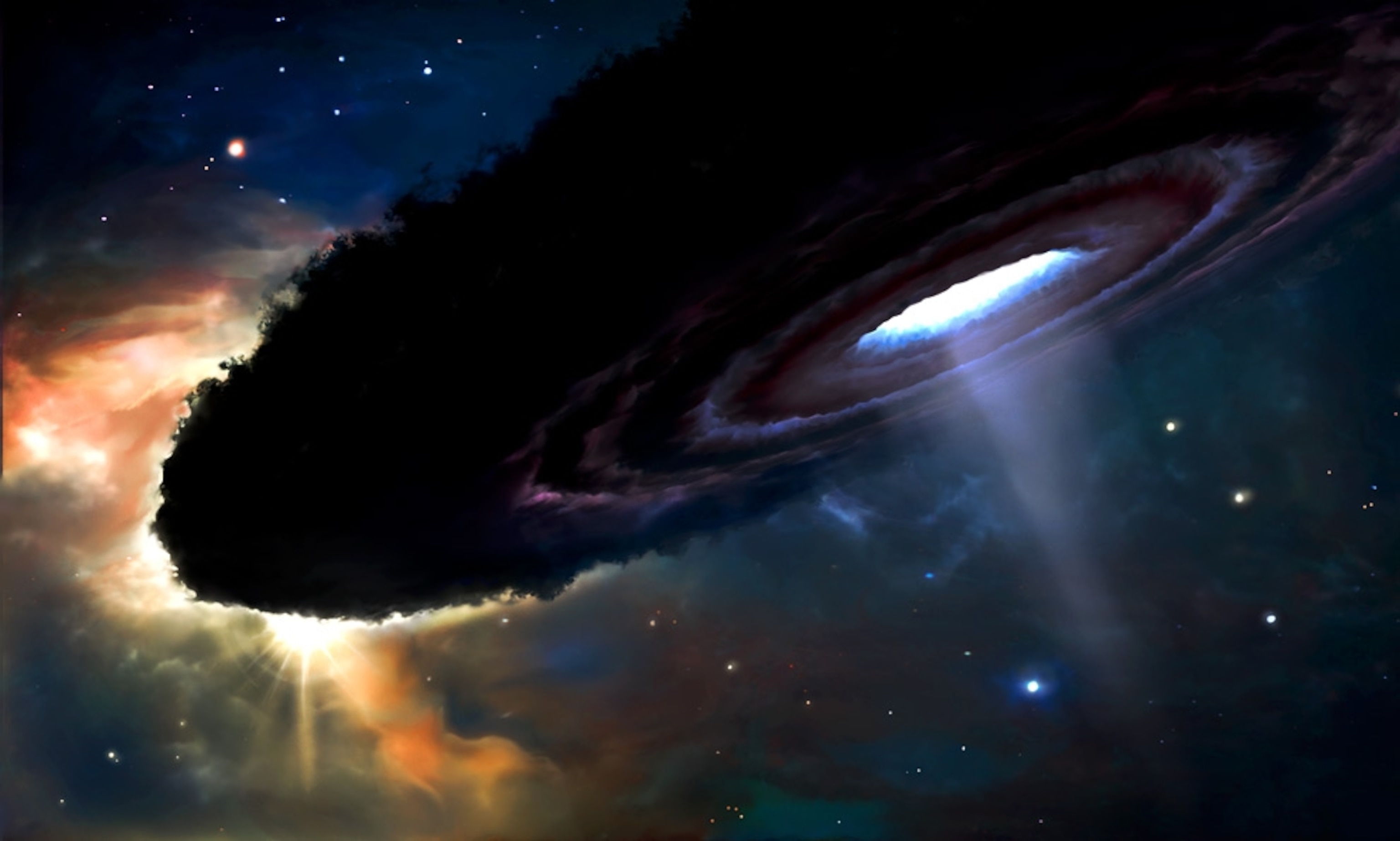
Yearlong Star Eclipse May Help Solve Space Mystery
Yearlong Star Eclipse May Help Solve Space Mystery
While relatively few people were looking, an unusual eclipse darkened New Year's Day.
On January 1 a giant space object blotted out our view of Epsilon Aurigae, a yellow supergiant star about 2,000 light-years from Earth. Based on studies of Epsilon Aurigae's previous eclipses, astronomers expect the star won't fully regain its bright shine until early 2011.
Normally the star is so bright it can be seen with the naked eye even by city dwellers. For all but the most rural star-gazers, though, the mystery object that eclipses the star causes it to vanish for about 18 months every 27.1 years.
Ever since the star's periodic eclipses were first recorded in 1821, astronomers have been puzzling over how Epsilon Aurigae pulls off its lengthy disappearing act.
Now, "using data from the Spitzer Space Telescope, we've reached a solution to a nearly two-century-old mystery," study leader Don Hoard, of the California Institute of Technology, said today at an American Astronomical Society press briefing in Washington, D.C.
According to the new model, Epsilon Aurigae is a dying star being orbited by another star, and that stellar dance partner is cloaked in a wide disk of dark dust.
Based on the new Spitzer data, Hoard's team thinks the eclipse lasts so long because the dark disk is about 744,000,000 miles (1,197,351,936 kilometers) across—eight times as wide as the distance from Earth to the sun.
Star Detectives
Binary star systems have long been known to cause stellar eclipses as seen from Earth. Epsilon Aurigae is unusual, though, because it has the longest lasting known eclipse.
(Related: Star "Fireworks" Expected From Strange Eclipsing System.)
The 18-month eclipse started last August, but it took the disk until now to fully obscure Epsilon Aurigae.
"If the eclipse was simply being caused by another [darker] star passing in front of the visible star, it shouldn't last that long," Hoard said.
Astronomers had suggested in the 1950s that whatever is passing in front of Epsilon Aurigae is masked by a disk of material.
The new Spitzer data, combined with readings of other light waves from ground and space-based observatories, suggest that the star inside the disk is a B-type, a blue star three times as hot as our sun.
At first, the team wasn't sure how to explain the readings.
Assuming Epsilon Aurigae is as massive as other similar stars, a lone B star, Hoard said, shouldn't be massive enough to generate enough gravity for the binary pair to orbit they way they do.
"So then we started thinking, Well, we need more mass but no more light" in the system for the disk model to work, he said.
The team started by wondering whether something else might join the B star at the center of the disk.
A black hole would add the mass the scientists thought was needed, but it would also add more light than has been observed in the system. That's because a black hole would gobble up matter from the disk, then spit it out in the form of detectable radiation. (Related: "Black Hole's "Jet Power" Revealed.")
Perhaps, though, the object in the disk wasn't the problem at all, the astronomers thought, but rather Epsilon Aurigae itself.
"So we back up for a minute and say, OK, what if [Epsilon Aurigae] is not a massive supergiant star? What if it's a low-mass … dying star?" Hoard said.
Such a star "can be big, but it doesn't have to have a lot of mass," Hoard said.
"And if we start with that assumption, everything just falls nicely into place."
In other words, the model of a large but low-mass star orbited by a B star shrouded in dust matches the centuries of data collected so far on Epsilon Aurigae—potentially explaining once and for all how the long, strange eclipse is possible.
"Details Need to Be Worked Out"
Other experts, however, are not quite ready to close the case file.
"Don says that we've solved it. I disagree," said Arne Henden, director of the nonprofit American Association of Variable Star Observers.
Even with the new model, he argued, the Epsilon Aurigae system is full of mysteries, such as the structure and composition of the supposed dark disk.
"What is the nature of this dusty disk? These are things you normally see around young stellar objects," said Henden, who is also a senior research scientist for the Universities Space Research Association at the U.S. Naval Observatory in Flagstaff, Arizona.
But the blue star in the new model would be much older, and its dusty disk seems to be filled with unusually large particles.
"There are still a lot of details that need to be worked out," study leader Hoard agreed.
Backyard Astronomers to the Rescue?
Both astronomers hope that during the current Epsilon Aurigae eclipse, modern technology combined with extensive public participation will help answer the lingering riddles.
Henden's star-observer organization is helping to organize a project called Citizen Sky, in which backyard astronomers are being trained to monitor Epsilon Aurigae's eclipse from start to finish.
Since the project's launch last September, more than 120 people in 19 countries have already submitted data.
"Technology has evolved tremendously since the last eclipse [in 1984], and amateur astronomers are able to get exquisite detail on a nightly basis," Henden said.
Aside from engaging the public in astronomy, he added, the Citizen Sky project "shows that classical astronomy"—using earthbound, optical telescopes—"is still alive and well."








